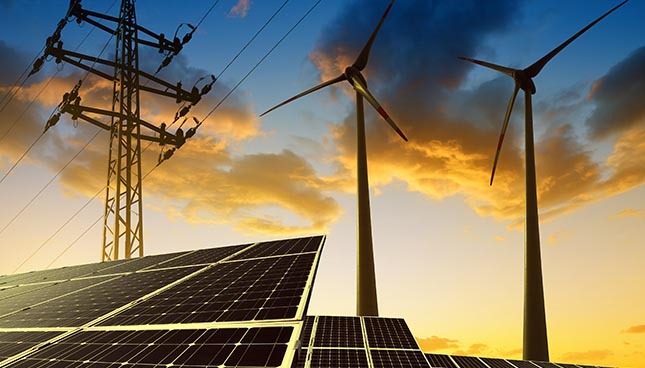Converting Energy for all Applications

Abstract Kamal Al-Haddad, Professor in the Department of Electrical Engineering at the École de technologie supérieure (ÉTS) since 1990, and holder of the Canada Research Chair in Electrical Energy Conversion and in Power Electronics, works in the field of electronic power converters, renewable energy and electric power quality in distribution networks. Given the increase in global energy demand, the need for converters with low energy loss will increase. Keywords: electronic power converter, quality of electrical energy
Introduction
Kamal Al-Haddad, professor in the Department of Electrical Engineering at the École de technologie supérieure (ÉTS) since 1990 and holder of the Canada Research Chair in Electrical Energy Conversion and in Power Electronics, works in the field of electronic power converters and electric power quality in distribution networks. The following articles give an overview of his fields of expertise (Haddad, M.et all. 2015; Hamouda, M. et all. 2016; Javadi, A. and Al Haddad, K. 2015; Sharifzadeh, M. et all. 2016; Vahedi, H. and Al-Haddad, K. 2016).
Energy Conversion: Always Evolving
In Quebec, electrical energy comes mainly from hydroelectric generating stations. After passing through several transmission stations, it is delivered to us in our homes at a voltage of 120 V AC and a frequency of 60 Hz. However, our residential outlets cannot accommodate all appliances. A cell phone battery, for example, requires a voltage of 5 V DC. Between the electrical outlet and the cell phone, a converter that will adjust the power supply to the specific needs of the device is therefore required. Conversely, the electrification of transportation, such as the Montreal subway, requires a voltage of 750 V DC. In addition, the current and power must be adjusted so that the wheels of the subway cars get enough energy to pull the combined weight of the passengers while limiting acceleration and deceleration to ensure their safety and comfort as well. Again, a special power converter takes care of this.

As technology is constantly evolving and products are continuously being improved, this produces new applications to deal with. Power converter components and materials also change. Therefore, the need to develop new types of converters is ever-present. All these power-supply dynamics are part of Professor Kamal Al-Haddad’s research, in particular with regard to industrial applications.
Electric Power Quality
Professor Al-Haddad also tackles the problem of electric power quality. A new device can create voltage and current disturbances, and alter the power quality on the power supply grid. These disturbances (pollution) will cause variations in the power supply of other neighboring devices connected to the same grid, which may shorten their life span and even affect their operation. It is therefore necessary to develop filters and other components to eliminate harmonics and regulate voltage and current.
Green Energy: A New Challenge
Green energy, a relatively new phenomenon, presents an additional challenge due to its wide variability over time. Indeed, with solar energy for example, transformation of photons into electrons to produce energy can only start at sunrise. When electricity production exceeds demand, voltage cannot be increased because this would reduce the lifetime of bulbs and other appliances, or even damage them. In the same way, when there is no sun, the network must still be supplied with power. A converter is then necessary to extract the maximum available variable energy and to it in an energy storage device (battery); and another one to regulate the energy flow coming from the battery to power the network.
New applications in power electronics are needed for solar panels. Nearly 1.3 billion people do not have electricity. Solar energy therefore becomes a major issue, some people talk about solar energy revolution. This technology is expected to be installed in homes, combined with a variable pricing rate, energy storage devices. It will lead to behaviour changes among users with respect to energy consumption and energy independence.

Energy: The Crux of the Matter
We are using more and more devices that store information and need energy. An annual increase in energy consumption of 5% to 6% is expected worldwide. This means choosing between generating more energy or doing more with the present energy production. The demand for low energy loss power converters will therefore increase.
Additional Information
Students interested in these research projects can contact Professor Kamal Al-Haddad for more information.


